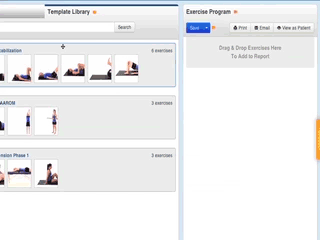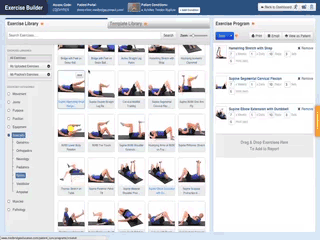The purpose of the Functional Movement Screen is to:
- Set a movement baseline
- Identify major problems with basic movement patternsWhat are major problems? In order of priority, they are:
- Pain with movement (scored as a 0 on the Functional Movement Screen)
- Inability to perform a simple movement pattern even when allowed a compensation (scored as a 1 on test)
- Major asymmetry with movement
We also need to remember that the Functional Movement Screen is PART of a system that includes a medical assessment (Selective Functional Movement Assessment) if there is pain or injury as well as testing (Y Balance Test Upper and Lower Quarter).
Misconception #1: The Functional Movement Screen isn’t really a screen because it’s not sensitive
Let’s start with an analogy from the athletic pre-participation physical: Cardiovascular Screening
In order to reduce sudden cardiac death in athletes, current guidelines recommend that an athlete undergo 12 tests including: targeted questions of personal and family history, heart murmur, femoral pulses to exclude aortic coarctation, physical stigmata of Marfan’s syndrome, and brachial artery blood pressure (standard blood pressure reading).1 This screening protocol has a low sensitivity for detecting conditions related to sudden cardiac death, so there has been extensive discussion in the literature about adding 12 lead EKG to the screening protocol. The use of 12 lead EKG is under great debate because of its high false positive rate (between 15 and 40%), the associated medical costs, and the lack of qualified personnel to interpret the results. What’s interesting about this is that even with the addition of EKG, every cardiac condition predisposing young athletes to sudden cardiac death is not identified; “specifically, anomalous coronary arteries, premature atherosclerotic coronary artery disease, and aortic root dilatation will go largely undetected.”1 So based on this, let’s ask some questions:
Considering there are 12 components to the cardiovascular screen above, let’s consider one that everyone is likely familiar with: blood pressure.
Is blood pressure a good screen?
Our immediate question should be: “For what purpose?”
Screening for sudden cardiac death in athletes? Not by itself.
You need to use multiple factors, and even still, you might not catch everything. However, if it’s positive by itself, it warrants further investigation and/or treatment.
Identifying someone in a hypertensive crisis? Yes
Identifying someone with high blood pressure? Yes
Is the Functional Movement Screen a good screen?
Our immediate question should be: “For what purpose?”
Screening an athlete for risk of injury? Not always by itself.
It’s best to use multiple factors (see how this has been researched below). If it’s positive by itself, it warrants further investigation and/or treatment, particularly if pain is present.
Identifying someone who has pain during 7 basic movements? Yes
Identifying a person who is unable to perform 7 basic movement patterns? Yes
Bottom Line: Similar to blood pressure, the Functional Movement Screen is good at what it’s designed to do — identify those who are unable to perform basic movement patterns and identify people who have pain with those movements. From an injury risk perspective, just like blood pressure, it’s much better when combined with the results of multiple tests and risk factors.
This brings us to another common misconception:
Misconception #2: The Functional Movement Screen is designed to be diagnostic
Keeping with our cardiovascular screening analogy, if someone has high blood pressure, you don’t know why and what you do about it depends on the results. The table below categorizes the results, and then the action plan is based on the category.
| Blood Pressure Category |
Systolic
mm Hg (upper #)
| |
Diastolic
mm Hg (lower #)
|
|---|
| Normal | less than 120 | and | less than 80 |
| Prehypertension | 120 – 139 | or | 80 – 89 |
High Blood Pressure
(Hypertension) Stage 1
| 140 – 159 | or | 90 – 99 |
High Blood Pressure
(Hypertension) Stage 2
| 160 or higher | or | 100 or higher |
Hypertensive Crisis
(Emergency Care Needed)
| Higher than 180 | or | higher than 110 |
Action plan based on the category
- 200/120 – Hypertensive CrisisThis is clearly a medical emergency – no brainer, go to the hospital and get treatment immediately.
- 145/95 – HypertensionDepending on your medical history (have you had a heart attack or stroke in the past?) and your current circumstances, further testing and some form of treatment is required.
- 130/85 – Pre-hypertensiveThis is a warning sign – you may not require medical intervention, but you should be actively working with your physician, modifying your lifestyle, and re-testing regularly.
- 110/70 – NormalKeep up the good work. You still need regular monitoring of your blood pressure.
Using a similar construct of analyzing multiple risk factors to identify someone who is at risk of sudden cardiac death,
Lehr et al used an injury prediction algorithm to categorize injury risk.
The following components (risk factors) with various weightings and interactions were included in the algorithm:
- Previous Injury
- Y Balance Test Composite risk cut score based on gender, sport, and competition level
- Y Balance Test Asymmetry
- Functional Movement Screen Total Score
- Functional Movement Screen Asymmetry
- Pain with testing
Here are the results of that study (
Lehr 2013)
| Risk Level | N | Injured | % | RR | RR 95% Cl |
|---|
| Normal | 27 | 0 | 0% | - | - |
| Slight | 93 | 15 | 16% | 4.9 | 0.7 – 35.3 |
| Moderate | 37 | 11 | 30% | 8.9 | 1.2 – 64.8* |
| Substantial | 26 | 16 | 61% | 17.6 | 2.5 – 123.6* |
| High Risk† | 63 | 27 | 43% | 3.4 | 2.0 – 6.0* |
*=significant p < 0.05 †= Moderate & Substantial Risk Categories Combined
A couple things to note: When multiple risk factors are used in combination, the injury prediction results become more robust. Those in the high-risk categories were nearly 3.5 times more likely to get injured and no one in the normal group was injured (high sensitivity = 1.0).
To be clear, someone in the normal category would have a Y Balance Test Composite above the risk cut score based on gender, sport, and competition level; no Y Balance Test Asymmetry; Functional Movement Screen Total Score above 14; no Functional Movement Screen Asymmetry, and no pain with testing.
So, we recommend the intervention be matched to the category (similar to how blood pressure is managed):
- Substantial Deficit:There is pain with testing (injury) or substantial dysfunction. This requires one on one evaluation (Selective Functional Movement Assessment) and intervention with a health-care provider. Re-testing to ensure lower category is key.
- Moderate Deficit:Depending on your medical history (have you had an injury/surgery recently or multiple injuries?) and your current circumstances, you need one on one intervention with either a strength and conditioning or medical professional. Re-testing to ensure lower category is key.
- Slight Deficit:This is a warning sign, you may not require one on one intervention, but you should be actively working with your medical and strength and conditioning professional, modifying your training, and re-testing regularly.
- OptimalKeep up the good work. Continue with evidence-based group injury prevention programs. You still need regular monitoring of your risk factors.
**note** researchers have found that being in this category may be protective factor for injury, so striving for this category is a worthwhile goal.
Misconception #3: The Functional Movement Screen results relate to how the person will perform under load or in competition
Remember, the goal of the Functional Movement Screen is not to measure sport performance. So the research studies that are trying to see if it relates to performance really don’t make much sense to me. Physical and sport performance is also highly variable, so it’s difficult to compare athletes of different skill. One study did look at the relationship of the Functional Movement Screen score and the potential for performance improvement in elite track and field athletes. That does make some sense – if you have a quality foundation, you are able to build better performance on that.
Further, I also believe that if someone does indeed pass the Functional Movement Screen and Y Balance Test, that he/she can still be at risk of injury because of poor landing mechanics, strength, endurance, poor agility, or power. But if he/she has passed, at least I can know that he/she possesses the basic motor control to improve those higher-level performance measures.
Summary
I think many of the misconceptions about the Functional Movement Screen relate to using a tool to perform something it was never designed to do. The FMS was not designed to:
- Be a comprehensive screening protocol for injury risk
- Determine a medical diagnosis or precisely pinpoint where the problem is
- Be used as a performance metric
References
- Asif IM1, Rao AL, Drezner JA. Sudden cardiac death in young athletes: what is the role of screening? Curr Opin Cardiol. 2013; 28(1):55-62.
- Go AS, Bauman MA, Coleman King SM, et al. An effective approach to high blood pressure control: a science advisory from the American Heart Association, the American College of Cardiology, and the Centers for Disease Control and Prevention. Hypertension. 2014;63(4):878-85.
- Lehr ME, Plisky PJ, Kiesel KB, Butler RJ, Fink M, Underwood FB. Field Expedient Screening and Injury Risk Algorithm Categories as Predictors of Non-Contact Lower Extremity Injury. Scan J Med Sci Sport. 2013 Aug;23(4):e225-32
- See more at: http://www.medbridgeeducation.com/blog/common-misconceptions-functional-movement-screen-phil-plisky/#sthash.Cle8BUAw.dpuf









